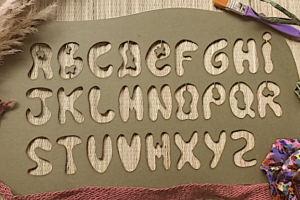Step into the world of rotifers—ancient, nearly indestructible microorganisms—in Rotifer (a)live, an immersive art-science installation. Created by Ohme, Karine Van Doninck, and Aiko Design, this retrofuturistic display showcases the tools and methods scientists use to study these tiny creatures.
See real rotifers under a microscope as they evolve before your eyes, and learn about their incredible journey to the International Space Station, where they survived space missions in 2019 and 2020. This installation highlights the resilience of life, from Earth to space.
——————–
Credits
Rotifer (a)live 2022 Installation, wood, acrylic glass, tulle fabrics, diverse materials Rotifer microscopy, video projection, rhodoid & paper prints, 3D print, laboratory glassware & equipment
By Ohme www.ohme.be www.instagram.com/ohme_projects
Aiko Design www.instagram.com/aiko__design In collaboration
Karine Van Doninck and her research group (ULB/UNamur) www.karinevandoninck.be
Microscopic footage: Live filmed alive rotifers (monitor), Video recordings by Boris Hespeels (projection), Video edition & effects by Raoul Sommeillier
Video “ROB 1 Experiment” (2020n 10’38’’, colour) by Richard Coos
Video “Project RISE – Rotifer in SpacE” (2020, 4’40’’, colour) by Samy Brutout, Kristopher Debroek, John Domingo and Jordan Hero (Serendy Picture at Haute Ecole Albert Jacquard) Rotifer hand-drawn illustration: Ophélie Lhuire
Microscopic photography & scanning electron micrographs: Irina Arkhipova, Diego Fontaneto, Boris Hespeels
Scientific publications: Donner, J., 1965. Ordnung Bdelloidea (Rotatoria, Rädertiere). Akademie Verlag: 297 pp and Simion, P. et al., 2021. Chromosome-level genome assembly reveals homologous chromosomes and recombination 586 in asexual rotifer Adineta vaga. Science Advances 7
3D conception & design: Thomas Raa, Alizée Rubino, Raoul Sommeillier
3D printed rotifer: Patricia Van Doninck of Jaspers-Eyers Architects Project coordination: Raoul Sommeillier, Karine Van Doninck
With the help of: Emilie Berns, Jérémy Berthe, François Bronchart, Laurent Grumiau, Boris Hespeels, Léa Mellini, Scientists of Molecular Biology & Evolution (MBE) research unit at ULB
With the support of: Innoviris, Jaspers-Eyers Architects, Kikk, La Pavillon de Namur, Inforsciences, Université de Namur (UNamur), Université libre de Bruxelles (ULB)






